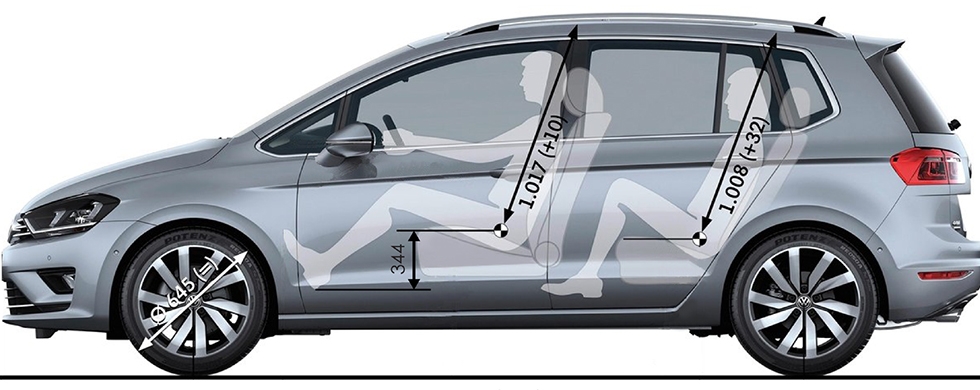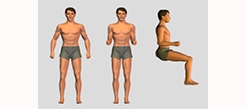Digital Human Model
Validation of the digital human model RAMSIS in relation to hand-reach capability
Master’s thesis in collaboration with Volkswagen AG
Summary
This work describes the validation of hand-reach capability predicted by the DHM (Digital Human Model) RAMSIS. The purpose is to provide users of the software with well-founded information on how to interpret data delivered by the DHM.
Ultimately, the aim is to avoid discomfort perceived by users of future cars due to control elements positioned out of their reach. Therefore, a step-by-step approach was chosen, which is subdivided into three user trials increasing in complexity.
The first experiment focuses on the arm-/shoulder region and compares the maximum reach taken in a 3D body scanner to individually created manikins based on subjects’ body dimensions while neglecting RAMSIS’s statistical posture calculation.
The second experiment shows that tall men are the most critical user group in regards to hand-reach. This is proven by data collected with the help of a 3D optical motion tracking system and defines the scope of the main investigation.
The third experiment takes the results of the previous user trials into consideration and places the test subjects in two production cars, Volkswagen Golf 7 and Golf Sportsvan. The test subjects’ driving posture inside the car and RAMSIS’s posture calculation applied to the manikins, allows a direct comparison of hand-reach capability seen in the prediction and reality.
As a final result, the findings are visualised and described by giving recommendations on how to interpret the data provided by the software.
Skriv ut ![]()


